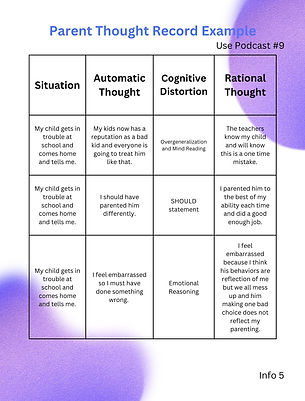Feelings Chart
Letting your child create their own feeling chart, can really begin the conversation with your child about feelings and how we express them. Children (and many adults) often express anger in situations when anger is actually the secondary emotion. This secondary emotion is a reaction to an underlying primary emotion, such as frustration, disappointment. Giving children the tools to identify and express their primary emotion can go a long way in reducing the need to express the secondary emotion of anger. Fill out this Feelings Chart with your child and use it to start the dialogue with your child about how anger relates to other feelings. When your child is expressing anger, once they have calmed, ask them if there was another emotion they were feeling below anger. Sometimes describing primary and secondary feelings as part of an iceberg can help children visualize this phenomenon. A useful graphic for this can be found here. Download the Feelings Chart below and create a Feelings Chart together. You can look up other Feeling Charts to help your child with ideas about how the faces may look.

Tip of the Iceberg
Children often express anger instead of their underlying emotion. As a parent, explaining this concept to children can go a long way toward reducing the expression of anger. This concept can be hard to explain to a child. The visual of an iceberg with the part on top of the water representing what we are showing and acting out when we express anger and the part below the surface, underwater, representing what we are actually feeling can be very helpful to a parent trying to describe this to a child. While a child may not be able to understand that their angry behavior is not what they are feeling, the iceberg helps them to get it on a visual level and starts the conversation about what the emotion may have been under the anger. Download the iceberg graphic below. Pairing this with the Feeling Chart activity is often a very effective intervention if used consistently. The Feelings Chart can be found here.

Child Daily Ratings
Children who can express their feelings are often able to better regulate their emotions which is linked to decreased depression, decreased anxiety and decreased conduct problems. The research has also linked regulation and communication of feelings with better peer relationships, better academic performance and more resiliency. There are a lot of reasons for all parents to work on emotion regulation and communication with their children. The Child Daily Ratings worksheet (from the Parenting the Misbehaving Child) should be used to facilitate the conversation between parent and child about emotions, to help the child develop the skill of regulation and communication and to develop the skill of monitoring and checking in with yourself daily. This Child Daily Ratings worksheet can be used in the early evening or right before bed. If the child needs help identifying feelings, The Feelings Chart can be found here. This Child Daily Ratings worksheet can be downloaded below.

Parent Thought Record
As parents, we spend a lot of time worrying about our parenting and how our children are affected by our parenting. We wonder if we are doing the right thing. We panic when our child messes up or runs into obstacles. Often, we apply the same cognitive distortions that we apply to our own life to what is happening to our children's lives. Knowing the cognitive distortions we engage in can allow us to reframe our thoughts and our reactions to our children's behaviors. Cognitive distortion work can be found here on Luminosity with Laura. The Parent Thought Record worksheet guides you to identify the cognitive distortions you may have as a parent and to challenge them and replace them. This worksheet comes from the Parenting the Misbehaving Child program. The Parent Thought Record worksheet can be downloaded below.

Download contains 2 pages
Parenting Styles
Listen to the podcast on Parenting Styles @DrLaurasCorner
This worksheet comes from the Parenting the Misbehaving Child program. The Parenting Styles Quiz and Info worksheet can be downloaded below.


